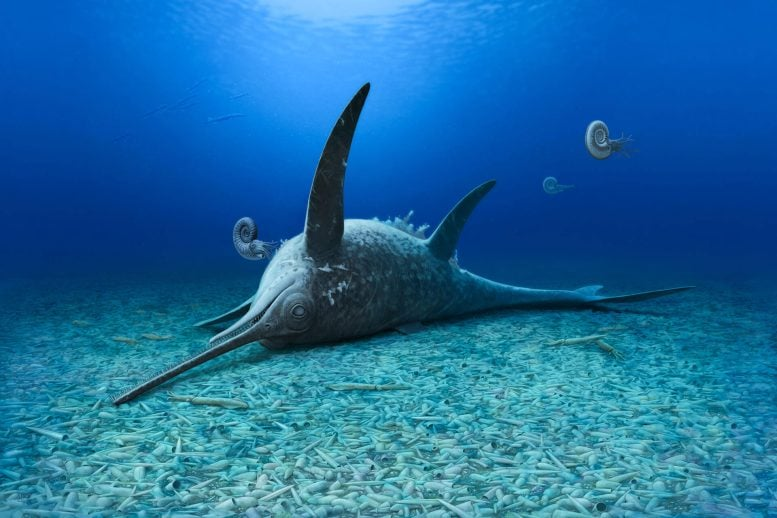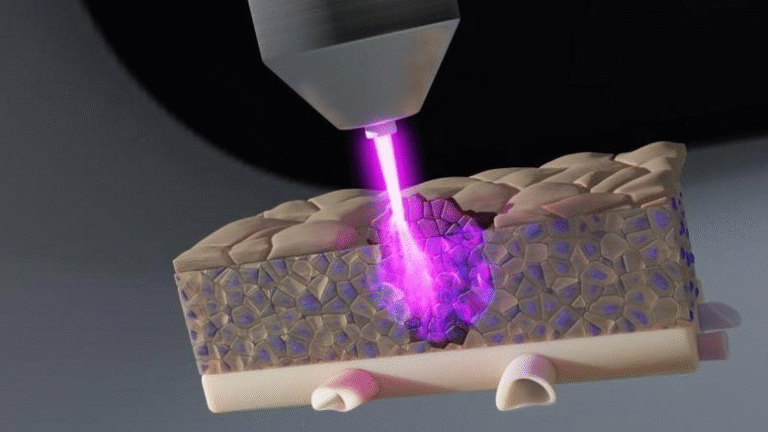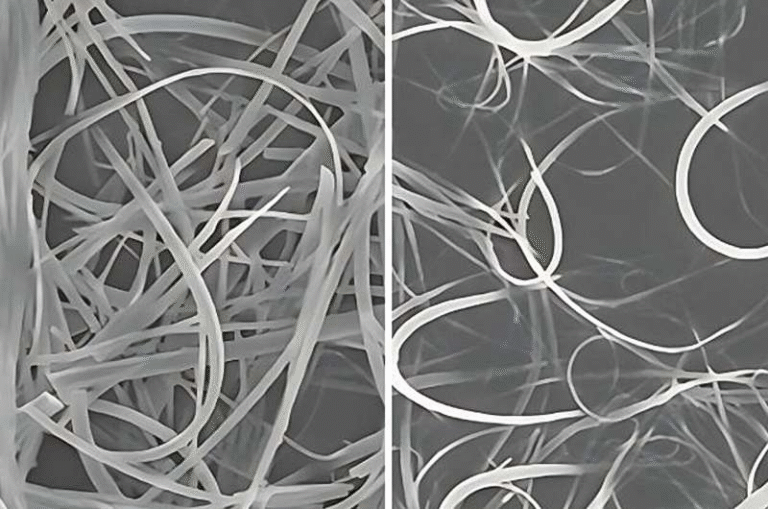Scientists Identify New Jurassic Ichthyosaur Species in Germany

A team of researchers from Switzerland and Germany has identified a new species of ichthyosaur, an extinct marine reptile that lived during the Jurassic period. The discovery is based on several well-preserved fossils recovered from the Mistelgau clay pit in Bavaria, southern Germany. The species has been formally named Eurhinosaurus mistelgauensis, referencing its discovery site and highlighting the importance of the Mistelgau locality for paleontological research.
This study, published in the open-access journal Fossil Record, represents a significant addition to our understanding of Jurassic marine ecosystems and extends the known evolutionary history of the genus Eurhinosaurus.
The Fossil Discoveries
The fossils that led to the recognition of Eurhinosaurus mistelgauensis were found in the Mistelgau clay pit, a site that has been systematically excavated since 1998 by the Urwelt-Museum Oberfranken in Bayreuth. Over two decades of fieldwork yielded three important specimens of eurhinosaurs from the upper Toarcian stage of the Lower Jurassic.
The recovered specimens include:
- Two nearly complete skeletons, preserved in a semi-articulated state.
- A partial snout, providing additional cranial material for comparisons.
One of the most striking finds is a large fossil plate measuring about 4 meters in length, containing not only ichthyosaur remains but also dense accumulations of fossilized belemnites. Such concentrations of belemnite remains are known as “belemnite battlegrounds”, a characteristic feature of the Mistelgau site. These fossil-rich layers provide unique insights into the marine environment of the Early Jurassic.
Unlike many flattened ichthyosaur fossils from other sites, the Mistelgau specimens are three-dimensionally preserved, allowing paleontologists to study fine skeletal details. This level of preservation makes them particularly valuable for identifying new anatomical features.
Why This Species Is Different
While all eurhinosaurs are recognized by their extremely elongated upper jaws, giving them a dramatic overbite, Eurhinosaurus mistelgauensis stands out for several unique characteristics:
- Robust ribs – The ribs of this species are notably thicker than in previously known Eurhinosaurus species. Mid-shaft measurements show rib diameters ranging between 9–14 mm, with thick cortices of 3–5 mm and only small medullary cavities. By comparison, the classic Whitby specimens of Eurhinosaurus have much thinner dorsal ribs, rarely exceeding 10 mm, and are often grooved.
- Distinct skull-neck joint – The cranio-vertebral junction displays special features that separate it from other species. Notably, the occipital condyle at the back of the skull is more massive, and the basioccipital peg seen in some other ichthyosaurs is absent.
- Epipterygoid preservation – Rarely preserved in ichthyosaurs, the epipterygoid bones were identified in these specimens. They show a unique shape with a diverging dorsal portion and a foramen, features not previously observed in Eurhinosaurus.
- Dentition – One of the skeletons preserved 44 teeth in the left premaxilla. The teeth are narrow, conical, smooth-crowned, and mostly straight, with only slight curvature in some. Many teeth were disarticulated, making exact counts difficult, but the morphology is consistent with the genus.
These combined features justified naming the Mistelgau specimens as a new species within the Eurhinosaurus genus.
Extending the Timeline of Eurhinosaurus
The Mistelgau specimens are also the youngest known occurrence of Eurhinosaurus fossils. Previously, the genus was known mainly from deposits in the early Toarcian. With these finds coming from slightly later Toarcian layers, the discovery extends the stratigraphic range of the genus further into the Jurassic.
This makes E. mistelgauensis an important data point in understanding how these specialized ichthyosaurs adapted and survived during times of ecological change.
About Ichthyosaurs and Eurhinosaurs
Ichthyosaurs were marine reptiles that thrived during the age of the dinosaurs. Although not dinosaurs themselves, they shared the oceans with them for millions of years. Their streamlined bodies resembled modern dolphins or tuna, an example of convergent evolution where unrelated animals evolve similar adaptations for fast swimming.
Among ichthyosaurs, the eurhinosaurs are especially remarkable. Their most distinctive trait is their bizarre overbite, caused by an upper jaw that extended far beyond the lower. This feature is thought to have played a role in hunting, possibly slashing through schools of fish or probing for soft-bodied prey like squid and belemnites.
Fossils of Eurhinosaurus have been found in several parts of Europe, including:
- Germany
- United Kingdom
- France
- Luxembourg
- Switzerland
The newly named Eurhinosaurus mistelgauensis adds Bavaria to this distribution, reinforcing the region’s significance for ichthyosaur studies.
Feeding and Lifestyle
The feeding habits of eurhinosaurs remain somewhat speculative, but the extreme jaw morphology strongly suggests specialized hunting strategies. The long, slender jaws with numerous small teeth would not have been effective for tackling large or armored prey. Instead, they likely targeted small, soft-bodied animals such as fish and cephalopods.
The presence of these ichthyosaurs in a belemnite battleground further supports this idea, suggesting they hunted in areas where cephalopods were abundant. The thickened ribs of E. mistelgauensis may indicate slightly different swimming adaptations compared to its relatives, though further biomechanical studies are needed.
Importance of the Mistelgau Site
The Mistelgau clay pit has become one of the most important Jurassic fossil localities in southern Germany. Since excavations began in 1998, the site has yielded numerous scientifically valuable fossils, including ichthyosaurs and other marine reptiles.
The fact that three specimens of the same genus were found here — with two nearly complete skeletons — is highly unusual. Most ichthyosaur finds elsewhere are isolated bones or incomplete skeletons. The Mistelgau material provides a rare window into Jurassic marine ecosystems that are otherwise poorly represented worldwide.
Broader Significance of the Discovery
The naming of Eurhinosaurus mistelgauensis underscores the importance of regional fossil collections like those of the Urwelt-Museum Oberfranken. Without decades of careful excavation, preparation, and curation, these specimens might never have been recognized as a new species.
The discovery also highlights how much there is still to learn about ichthyosaurs. Despite being among the best-studied groups of marine reptiles, new species continue to be described, and each new find reshapes our understanding of their diversity and evolution.
What Comes Next
Researchers are preparing additional studies on the Mistelgau ichthyosaurs. These future investigations will include:
- Analysis of injuries and healed trauma in the skeletons, which could provide evidence about interactions with predators or competition within species.
- Studies on growth patterns in the bones to understand the life history of these animals.
- Comparisons with other ichthyosaur faunas across Europe to place E. mistelgauensis into a broader ecological and evolutionary context.
As more details emerge, we can expect to gain fresh insights into how these marine reptiles lived, fed, and adapted during the dynamic environments of the Early Jurassic seas.
Additional Background: Ichthyosaurs in Context
To give a broader perspective for readers new to the subject, here are some additional points about ichthyosaurs:
- They first appeared in the Triassic period around 250 million years ago and survived until the Late Cretaceous, about 90 million years ago.
- Their body plans were so streamlined that they could rival modern tuna in terms of efficiency, making them some of the fastest predators in the ocean.
- Some ichthyosaurs grew to over 20 meters in length, though most species were much smaller.
- Fossil evidence shows they gave live birth in the water, rather than laying eggs on land, similar to modern whales and dolphins.
- Their large eyes, often ringed with bony sclerotic plates, suggest they had excellent vision, possibly for deep-water hunting.
Conclusion
The discovery of Eurhinosaurus mistelgauensis is more than just the naming of a new species. It extends the known timeline of the genus, highlights the scientific importance of the Mistelgau site, and introduces unique anatomical features not seen before in other eurhinosaurs.
By carefully studying these fossils, paleontologists are piecing together a clearer picture of life in the Jurassic seas — a world dominated not only by dinosaurs on land but also by extraordinary reptiles like ichthyosaurs in the oceans.
Research Reference:
A new Eurhinosaurus (Ichthyosauria) species from the Lower Jurassic (Toarcian) of Mistelgau (Bavaria, Southern Germany)





